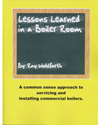Loading dock safety
Proper operating procedures are essential in preventing accidents.

Loading docks are the hub of activity and are one of the most dangerous spots in a warehouse.
This is due to the combination of hazards and the volume of activities that occur in this usually confined area. One can find hazards such as trucks backing relatively blind into docks, forklifts moving materials in and out of trucks, dissimilar surfaces that are often wet and slippery, ramps and inclines, sheer drops out of doors, pedestrian traffic, congested staging areas, accumulation of debris, restricted views, trailer creep, and poor lighting in trailers. OSHA found at least 25% of warehouse-related injuries occurred in the loading dock area and the injuries tended to be more serious or fatal.
OSHA regulations specific to loading dock safety are found in 29CFR1910.176 “Material Handling,” 29CF1910.178 “Forklift Safety” and 29CFR1910.22 “Walking-Working Surfaces.” Education, proper equipment and enforcement of safe operating procedures are essential elements to the prevention of accidents. Let’s take a look at a few specific areas of concern.
Watch out for the creep
With the volume of material being handled and the urgency of maintaining schedules, it is critical sufficient equipment is available and employees are trained in the use of the equipment and proper lifting techniques.
One of the most dangerous things to occur at a loading dock is trailer creep or the tendency of the trailer to move away from the dock as forklifts drive on and off. It can result in the forklift dropping between the dock and the truck. Factors that affect trailer creep include the weight and speed of the forklift, the grade the truck is parked on, the softness of the truck suspension (air-ride trucks have very soft suspension), the type of dock levelers used (some can cause the forklift to “drop” onto the trailer) and whether the trailer has been dropped or is connected to the tractor.
To prevent trailer creep, the truck must be secured with wheel chocks or vehicle restraint systems. Dropped trailers should be supported with portable jack stands in addition to the forward landing gear to prevent tipping and trailer creep. No matter the system used, a forklift operator must be required to ensure the chock is in place or the “automatic” system is engaged before driving onto the trailer. The forklift operator should be required to visually inspect the floor of the trailer to ensure it is strong enough to support the loaded forklift.
Keep an eye out
Walkways and staging areas should be clearly marked and segregation of pedestrians and machinery maintained. No pedestrians should be in a trailer with a forklift, on the opposite side of a flatbed being unloaded by a forklift or in the area where trucks are backing into the dock. Staging areas should be as far from the dock doors as possible and have limits on the height of product so machine operators can see other employees in the area.
Another danger is the open dock door when a truck is not present. The pavement is generally at least 48 in. below door level, so OSHA regulations require it be guarded by a security gate when a truck is not present and the door is open. Prevent impact or crush injuries by instructing employees to avoid jumping or hanging out the dock door.
Dock levelers provide a bridge to the trailer and a ramp to facilitate the transition in height from dock to trailer. Workers must be required to use the dock leveler. Oil, grease and water can make surfaces slippery and should be cleaned up. Ensure dock seals are in good repair to keep out rain and snow. Debris can accumulate in the loading dock area and cause a slip-and-fall or tripping injury. Provide bins for trash disposal.
Loading docks can be made a safe working environment by implementation and enforcement of basic safety rules, provision of sufficient equipment and constant vigilance. A toolbox talk to use with employees on this subject is available at www.asa.net/safety.
HELPFUL LINKS
AMERICAN SUPPLY ASSOCIATION (ASA)
FOLLOW SUPPLY HOUSE TIMES ON TWITTER!
LIKE SUPPLY HOUSE TIMES ON FACEBOOK!
CONTACT SUPPLY HOUSE TIMES
Looking for a reprint of this article?
From high-res PDFs to custom plaques, order your copy today!







